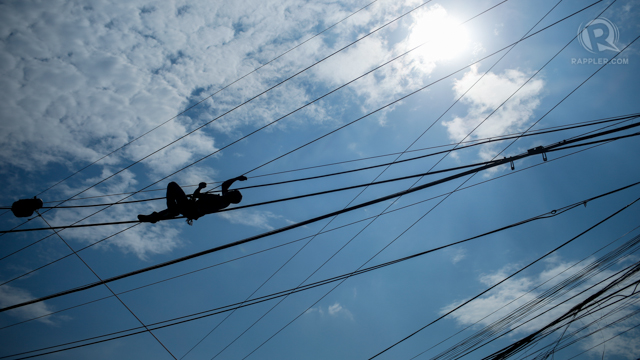SUMMARY
This is AI generated summarization, which may have errors. For context, always refer to the full article.

GENERAL SANTOS CITY, Philippines – Mindanao’s power deficit could be higher than expected, the Department of Energy (DOE) admitted.
This was one of the disclosures made by Energy Secretary Jericho Petilla to 300 industrial and commercial power users in General Santos City at a power forum on Wednesday, March 27.
Petilla also admitted that supply has been curtailed in the region as reserve capacity in the Mindanao grid has been in the red over the past few months.
“How much (exactly) is that demand, we do not know. We are struggling to get that figure,” Petilla said.
In its website Thursday, March 28, the National Grid Corporation of the Philippines (NGCP) reported a 25-megawatt (MW) available reserve capacity in the Mindanao grid, an improvement over the deficit of 76 MW.
Available capacity in the island was only at 1,000 MW with a peak demand of 975. Last week, the average peak demand was at 1,175 MW.
The NGCP, however, said the system peak demand was at 975 MW, a big drop from peak demand in 2007.
“Nobody really knows about the Mindanao data because of the curtailed demand,” Petilla admitted.
Last week, the average daily deficit was more than 250 MW resulting in widespread power outages in Mindanao.
Brownouts reached up to 8 hours in Zamboanga City and 7 hours in General Santos City. Power outages averaged 2 to 3 hours in many provinces in the region.
The only areas spared from the brownouts were Davao City, Cagayan de Oro, some parts of South Cotabato and Cotabato City. Figures for peaking power demand have been inconsistent.
In 2007, the system peak demand was around 1,250MW. Manuel Hamoy, then chief of the defunct Transco in General Santos City, said earlier, that peak demand in 2008 was projected to hit 1,440 MW. Transco has since privatized and renamed the NGCP.
The DOE expects the country’s power woes to continue until 2015as the national government embarks on various power projects in the near and medium term.
While they wait for the increase in the region’s power capacity, Mindanao residents must shoulder an average increase of about P3 per kilowatt hour in their electricity bills.
Petilla said one of the options right now has to be presented to the electric cooperatives. On April 1, Petilla will be calling a meeting of all electric cooperatives (ECs) in Mindanao.
The meeting will give ECs options on what they can do to have additional power. Prices range according to availability of power. Some can provide power for 6 years or 3 years, or even for 6 months. – Rappler.com
Add a comment
How does this make you feel?


![[In This Economy] Can the PH become an upper-middle income country within this lifetime?](https://www.rappler.com/tachyon/2024/04/tl-ph-upper-income-country-04052024.jpg?resize=257%2C257&crop=295px%2C0px%2C720px%2C720px)







There are no comments yet. Add your comment to start the conversation.